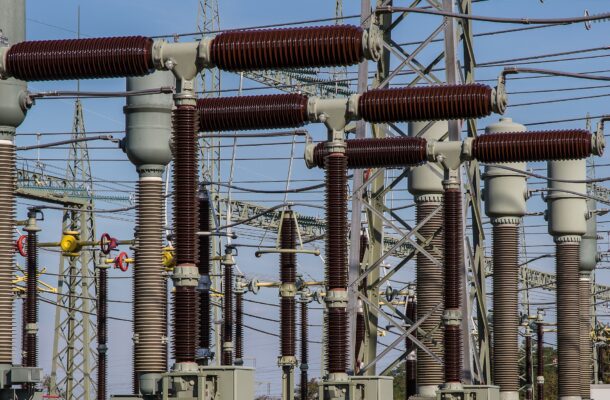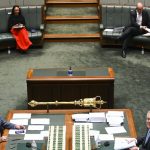Future nuclear options

There are several new technologies which may transform the nuclear industry, possibly lowering costs and improving flexibility. If these plants are successful, they may appear to be a good solution in Australia. However, they have been four to ten years away since the 1970’s.
Over many years, billions of dollars have been spent on the promise of Small Modular Nuclear Reactors in the US, UK, China, France, Japan and Russia and even Argentina. While about four are working around the world in test or very remote locations where other forms of power are not practicable, none are yet working in normal grid applications, and it is at least nine years before the first commercial unit will be demonstrated.
NuScale the only SMR company to receive Design Certification has withdrawn that design and proposed a new design which will need another two years of certification. Then it has announced that its pre-subsidy price for power has gone from US $58/MWh to $130/MWh at 95% capacity.
In the meantime, utilities in the US are facing more and more variable demand and wind and solar at pre-subsidy prices at $40-60 including storage so NU-Scales project is effectively stymied. GE-Hitachi’s more realistic BWRX300 still does not have Design Certification but is likely to be only slightly cheaper than NUScale’s plant. Westinghouse have not even submitted their new concept (not yet a design) and Rolls Royce is still in the preliminary stages of certification and has less than one third of the funds required to complete a full scale demonstrator.
Terrapower is basking in the glow of backing from Bill Gates and Warren Buffet but has not yet explained:
How it will find fuel, the whole reactor is designed around HALEU fuel only available from Russia. There are efforts under way in the US to build HALEU fuel plants but as yet, they are billions of dollars in financing and five to ten years away from commercial volumes of fuel, let alone certification of the fuel itself.
How it will make sodium cooling reliable when others have been trying for 40 years.
How it will make molten salt storage reliable when in the much less demanding application of solar thermal, it has had significant problems.
How it will make a heterogenous 3 loop cooling system with three different materials resist corrosion and erosion when the highest maintenance area with conventional nuclear systems is their heat exchangers with simple water/steam on each side.
How it will be economical when it has the added cost burden of sodium cooling, molten salt pumping, storage and heat-exchangers, as well as oversized electrical plant,
Against all odds
Assuming that against all odds, one or two plants do start generating power in 2029, we will need at least 3-5 years to see if they are reliable. It took more than thirty years for conventional nuclear plants to reach their current state of reliability so even if a few SMR designs do eventually become reliable, it is quite possible that it will take three to seven years to work out the bugs.
Then there remain all the siting, environmental approvals, licencing and financing to go through so the earliest we would see one unit generating in Australia is around 2037 but most likely 2040.
Thorium is another promising fuel and experimental thorium reactors are being built but there are serious questions about life of the components and again it is seven years before the durability experiments in China are completed.
If successful, then it will be at least a further five to seven years before a full scale “Proof of Concept” thorium reactor could be running at full load if we are lucky. Then there is five years of operation before we can have any confidence in the technology and then the same old licensing, financing and construction times.
Even China with its vastly higher demand and aggressive nuclear program sees that nuclear will provide no more than 15% of demand and China’s enthusiasm of nuclear is waning. In the 18 months to June it added 4.4 GW of nuclear vs 260 GW of solar and 98 GW of wind. The State Council just approved six new reactors, but even allowing for high load factors that is still a quarter of supply that wind and solar have added in the first seven months.
In summary, just to replace our increasingly unreliable coal plants we need action long before any of these solutions can make a meaningful contribution, so nuclear power is not currently relevant for Australia. Even with some future breakthroughs on SMRs it is extremely unlikely that nuclear would supply more than 5-10% of Australia’s electricity,
Renewable Action
Just to illustrate how fast the transition can happen, the UK went from 42% coal in 2012 to 6% last year and less than 0.75% Year to date. It went without coal altogether for 1830 hours in 2018 and it is already up to 3570 hours to the end of August. Gas has fallen from 126,000 GWh/yin 2016 to 88,000 GWh/y at current trends. Nuclear power share is also falling from just under 23% of supply in 2017 to 15.3% this year and between now and 2030 four nuclear plants are scheduled to close and two open.
This year Germany closed its last nuclear plants, however combined coal, gas and nuclear have fallen to 44% of generation from 55% in 2019. Since the nuclear plants closed Germany has averaged 60% renewables. Germany still has, as it has had every year for at least the last ten years an electricity trade surplus with France, although this year for the first time all electricity imports will exceed all exports.
At the current rate of installation of wind and solar, Germany will have the choice next year to continue to import power and further lower coal and gas usage or stabilise coal and gas usage and return to an export surplus. It will probably choose the former because Nordic renewables are cheaper than imported coal and gas.
Spain with very little solar, but about 7 GW of wind and solar approved is already at 53% renewables despite hydro being down 40% from a few years ago and has swapped from import export ratio of 17:10 to export/ imports of 17:7.
In the US in 2014 coal was 50% greater than all renewables. In the US year to the end of June renewables produced 69% more than coal – 34% more than nuclear. On current trends wind alone will pass coal next year and nuclear in 2026. All renewables will easily pass coal and nuclear combined by then.
The EU has transitioned from 68.5% coal and nuclear in 2018 to 57% so far this year. In Q3 so far it is 44% renewables vs just 29.4% five years ago.
Wind and solar generation in China have jumped from 224 TWh in 2019 (8.4% of China’s demand and 95% of Australia’s electricity demand) to 624 TWh in the first 7 months (13% of Chinese demand, 420% of Australia’s electricity demand). Nuclear power in China managed 250 TWh in seven months – 5.9% of Chinese demand up from 4.65% in 2019.
Renewables in Australia
In Victoria on a sunny windy late spring day, state power consumption drops to about 105-130 GWh per day. On a good day now, wind generates 70-75 GWh+. The new wind farms under construction are more effective and will generate about 30-35 GWh on a windy day i.e. a total of 80-100 GWh from wind after curtailment. Rooftop solar in Victoria currently supplies around 4,300 GWh/y. This is expected to increase to around 8,000 GWh, (25-35 GWh/day in late spring) by the time Yallourn closes.
That is almost as much as Yallourn’s output last year. This will be easily achieved if warehousing and industrial usage increases to the level of household penetration. Large scale solar in Victoria has progressed more slowly than expected but new plants on order will increase output so by late spring 2024, output will rise from around 4.2 GWh per day to around 8 GWh.
Thus, wind and solar will supply 90-130 GWh+/day in 2025 less curtailment. If necessary, hydro can easily supply 15 GWh in a day and gas 15 GWh. Given that Tasmania will be able to deliver 10 GWh/day and SA 12, it is theoretically possible that by 2025/2026 Victoria could go coal free for days at a time.
In practice that will not happen because brown coal plants will be kept going to undercut NSW black coal generation while gas and hydro will be saved for low wind/solar days. There will however be 70% renewable days net of exports (3rd of August 2023 was 65.6%) and annual renewable share in the 23/24 financial year will be between 43-45% of Victorian power consumption and more than 45% of generation.
It is fairly obvious that the opportunities for nuclear will disappear long before a nuclear plant could be operating.
Peter Farley is the President of the Victorian Vernier Society and former Deputy President of the Victorian Committee of Engineers Australia. He has also served as a Director of the Inner Melbourne VET Cluster for more than a decade.










